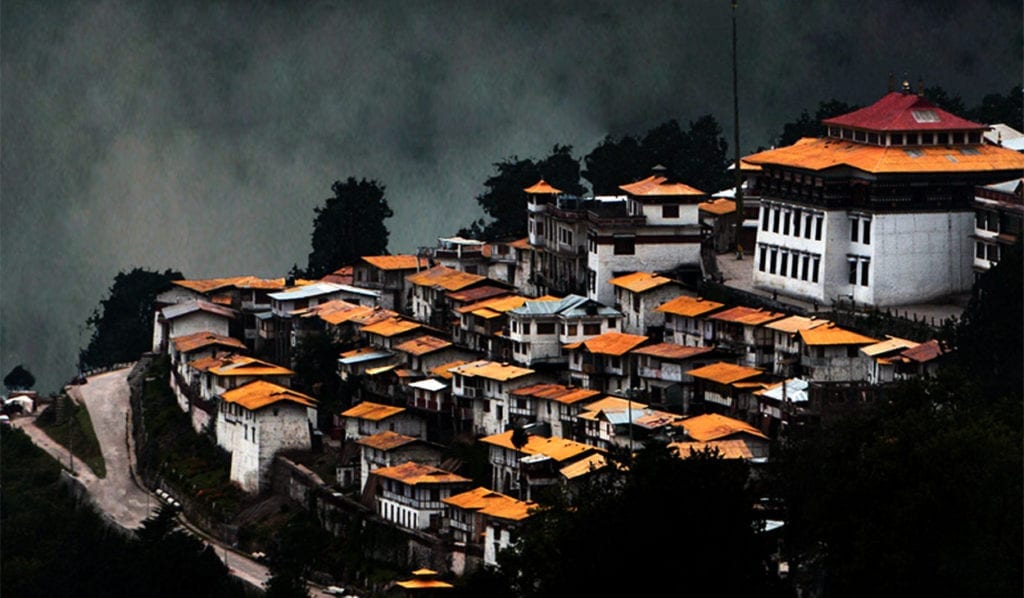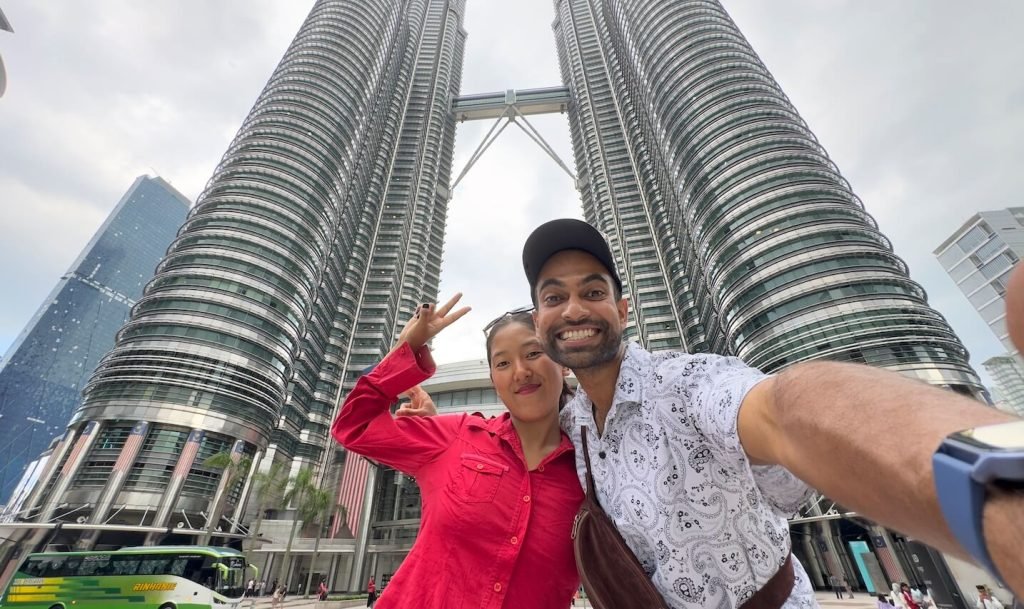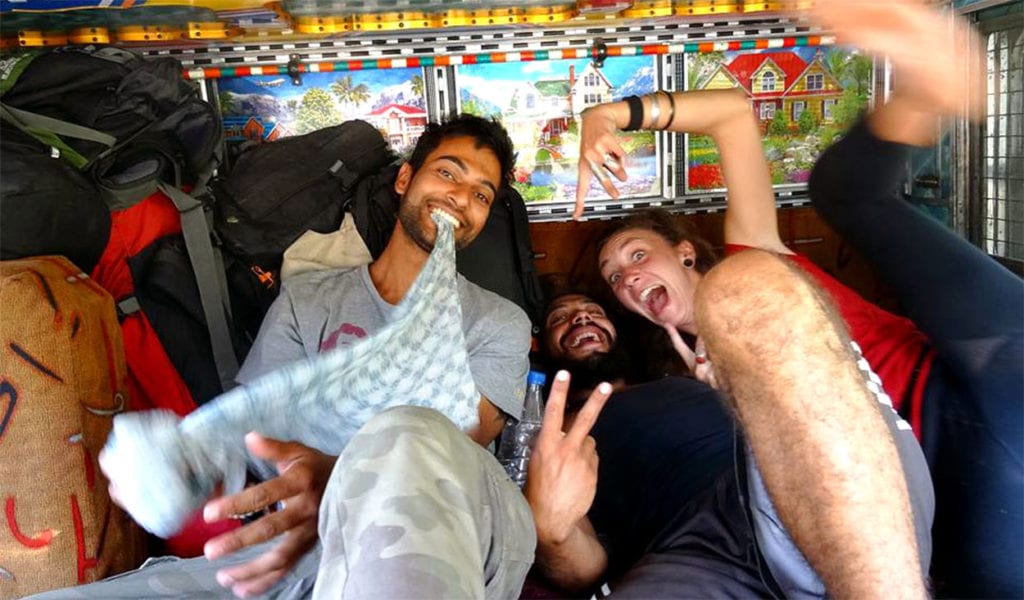Tawang Monastery Arunachal Pradesh is the world’s second-largest monastery. Located at 10,000 feet with a commanding view of Tawang River, this spiritual retreat is one small city in itself. It is an ideal epitome to over 500 monks who, many of whom are novice monks. They stay inside the monastery premise and learn and follow Buddhism.
The Tawang Monastery is one of the largest and most significant Buddhist monasteries in India. With its stunning Himalayan backdrop and rich spiritual heritage, it serves as a spiritual retreat for the Mahayana Buddhism and a hub of monastic learning. Beyond its religious importance, Tawang Monastery is a cultural treasure, offering visitors a glimpse into centuries-old traditions, intricate architecture, and the serene lifestyle of monks living in harmony with nature.
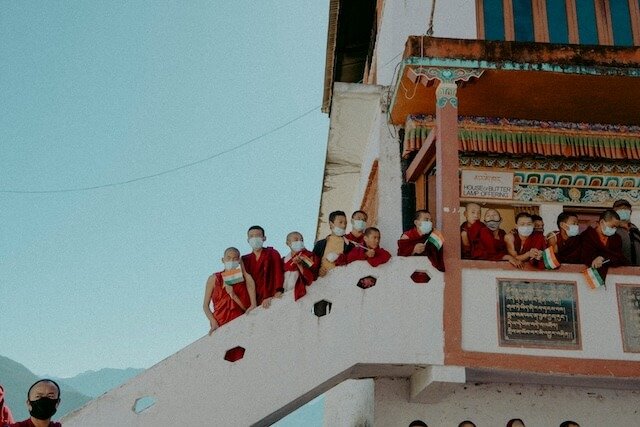
Tawang Monastery: An Introduction
Tawang Monastery is located in Tawang city in the Indian state of Arunachal Pradesh. The city is wrapped with a hulking mountain range that casts special magic on whoever visits it. The entire valley is, moreover, no less a patchwork of stunning mountain ridges. And the highlight of the city is this monastery that I was first introduced while getting a psychic lesson from someone on Nebula Site (we are not discussing about this experience so let’s continue with the Monastery).
Other than the natural vistas and the world’s second-largest monastery, what else worth exploring in Tawang is the local Monpa tribe.
With a Buddhist prayer wheel in their hands and a traditional yak-wool overcoat, the Monpa people can be found in Tawang and a few other places. A small number live in the East Kameng district near the Bhutan border. They are sub-divided into six sub-groups because of the different languages each sect speaks. Not much is known about them, but their appearance is certainly striking.
But, again, the prime reason to visit Tawang and why the city stands above the crowd is that it is home to the world’s second largest monastery – one of the most revered and biggest spiritual retreats in India.
And it is this distinction that makes it exclusive in the world.
My Experience Of Visiting Tawang Monastery
… and this is what it taught me!
During my visit to Tawang Monastery Arunachal Pradesh and a small conversation with a senior monk, I found that in Buddhism they believe that a child is capable to follow ‘Lamahood’ when he is mature enough to walk on the path of compassion. If you are interested in learning more about Buddhism and how it functions, I recommend you visit Bodhgaya in India – a place that is known as the birthplace of this religion.
The conversation was soon accompanied by a small incident that further validated the belief and inspired me to practice compassion myself.
I don’t remember his name but the message he left me with was something indelible. As I stumbled upon his cute novice face and started with my routine photo shoot accompanied by questions like where he came from and what he was learning in the monastery, we found a spider crawling on the floor.
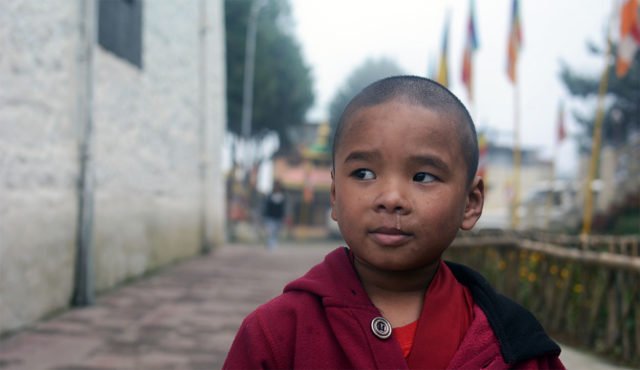
I have seen kids generally foreboding and running away in fright in such situations, wanting someone to kill whatever is causing them distress.
But this little fellow went from carefully catching hold of this spider and releasing it away from us, with an arresting smile on his face.
When I asked him why he did so, he struggled a bit to put this forward and said: “because we are humans and we are meant to look after others”.
For a kid of his age, away from his parents – showing such love and compassion for others, in my opinion, was a lesson. But I guess that’s what monastery teachings and knowledge are all about. And when we are talking about Tawang Monastery Arunachal Pradesh, the world’s second-largest monastery, the teachings had to be even stronger.
I’ve often heard Buddhists talking about wisdom and compassion but witnessing such a small child practising it with such innocence was simply overwhelming.
How to Visit Tawang Monastery: Practical Tips
Reaching Tawang Monastery is an adventure in itself. The nearest major city is Guwahati in Assam, from where you can either take a flight to Tezpur or directly to Zero in Arunachal Pradesh (seasonal flights) and then hire a cab or take a shared jeep to Tawang. The road journey from Tezpur or Bomdila takes about 10–12 hours depending on weather and road conditions, but trust me — the scenic drive through winding mountain roads and rivers makes it all worthwhile.
If you’re coming from Shillong or nearby areas, you can also plan a road trip via Dirang or Bomdila. It’s important to note that an Inner Line Permit (ILP) is mandatory for Indian citizens, and a Protected Area Permit is required for foreign tourists. These can be easily arranged online or at designated offices in Assam and Arunachal.
Once you reach Tawang town, the monastery is just a short drive uphill. You’ll find signage leading you to the entrance, and parking is available close to the complex.
Best Time to Visit Tawang Monastery
I visited Tawang Monastery in late September, and the weather was perfect — crisp air, clear skies, and just enough chill to keep things refreshing without being uncomfortable. The best time to visit is between April and October. During these months, the roads are open, and the region is accessible. If you love snow and don’t mind the cold, December to February offers stunning snow-covered landscapes, though heavy snowfall may block the roads.
Monsoon (July–August) should be avoided if possible because landslides and roadblocks are common. Spring (April–May) brings blooming rhododendrons, while autumn offers crystal-clear views of the mountains.
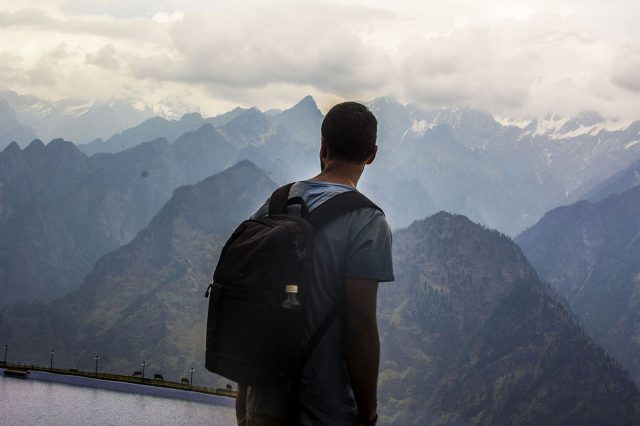
What to See and Do at Tawang Monastery
When I stepped into Tawang Monastery, I immediately felt a deep sense of calm. The monastery is spread across several levels, with prayer halls, stupas, and monk residences. You should plan to spend at least 2–3 hours exploring the complex thoroughly. If you want to soak in the atmosphere, attend prayer sessions, and walk around at leisure, a half-day is ideal.
1. The Main Prayer Hall In Tawang Monastery
The prayer hall is where the monks chant in harmony. The walls are adorned with intricate murals depicting Buddhist philosophy, and the golden statue of Lord Buddha sits at the center, radiating serenity.
2. The Museum and Library
There’s a small museum inside the monastery that showcases ancient manuscripts, traditional artifacts, and photographs of past spiritual leaders. The library holds Buddhist scriptures and texts, and even if you don’t read them, the atmosphere feels deeply intellectual and spiritual.
3. The Courtyard and Viewpoints
The monastery is perched on a hill, so from its terraces, you get panoramic views of snow peaks and lush valleys below. I spent nearly an hour just sitting quietly, watching clouds drift past.
4. Interacting with Monks In Tawang Monastery
If you’re open to conversation, some monks are happy to share stories about the monastery’s history or their daily routines. Their simplicity and discipline are inspiring.
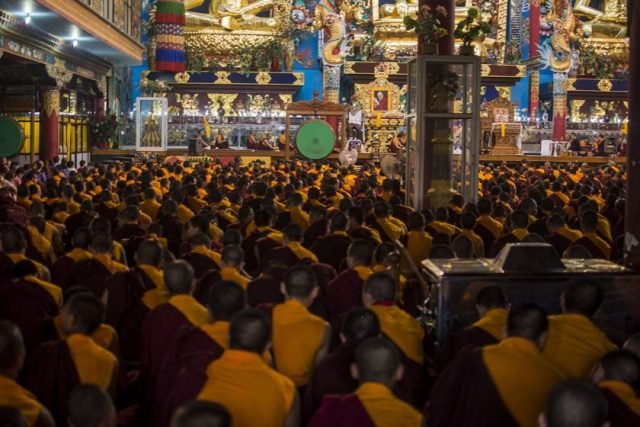
For a fulfilling visit to Tawang Monastery, I recommend setting aside half a day. However, if you want to experience morning prayers, visit the museum, walk around the town, and relax without rushing, plan for 1–2 days in Tawang. I stayed for two days, which gave me the chance to explore other nearby sites without feeling pressed for time.
Where to Stay in Tawang
Tawang town offers a range of accommodation options — from government-run tourist lodges to cozy homestays and boutique hotels. During my visit, I stayed at a comfortable guesthouse not far from the monastery. The hosts were warm and ensured I had everything I needed — hot meals, local insights, and transport suggestions.
For those looking for more upscale stays, there are a few hotels that offer modern amenities with views of the mountains. Booking in advance is recommended, especially during peak seasons like summer holidays or winter breaks.
If you prefer a local experience, staying in a homestay is an excellent choice. It gives you the chance to interact with the locals, taste authentic food, and learn about their culture.
Other Things to See Around in Tawang
A visit to Tawang Monastery is just one part of what Tawang has to offer. I explored several nearby attractions, each with its own charm:
1. War Memorial
A short drive from the monastery, the memorial honors soldiers who laid down their lives in the 1962 Indo-China war. The surroundings are peaceful, with snow-capped mountains in the backdrop.
2. P.T. Tso Lake
This pristine lake, about 40 km from Tawang, is a hidden gem. The turquoise waters and tranquil atmosphere make it a perfect spot for reflection and photography.
3. Urgelling Monastery
Considered the birthplace of the 6th Dalai Lama, this smaller monastery is steeped in history. It’s a peaceful spot that’s less touristy but equally spiritual.
4. Madhuri Lake
Named after a Bollywood actress who once filmed here, this lake is surrounded by thick forests and rolling hills. It’s an ideal spot for a picnic.
5. Local Markets
Tawang town’s bazaar is bustling with colorful stalls selling handicrafts, woolens, and local produce. I loved picking up souvenirs like prayer flags and handcrafted jewelry.
Final Thoughts
Visiting Tawang Monastery felt like a journey not just through space but through time. It’s a place where nature’s grandeur meets spiritual depth, and every corner invites introspection. Whether you’re a first-time traveler or an experienced trekker, this monastery offers something unique — peace, culture, and an escape from the noise of everyday life.
If you’re planning a trip, I highly recommend setting aside at least a couple of days in Tawang. Explore the monastery at your own pace, interact with the monks, and take time to breathe in the Himalayan air. Trust me — it’s an experience you’ll carry with you long after you leave.
What do you think? Let me know in the comments.
Also Read: Namdroling Monastery Bylakuppe

